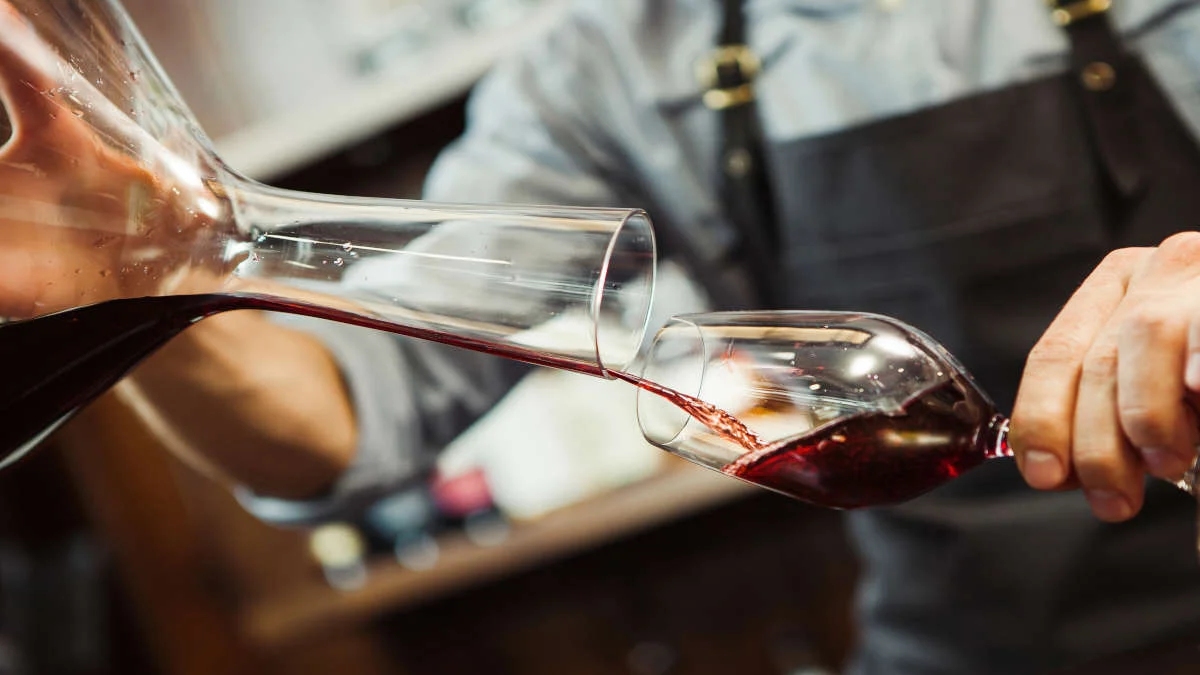Imagine this: You’ve just bought a bottle of wine that you’ve been eager to try. You’re ready to pop the cork, but there’s one lingering question—should you decant it? Decanting is one of those wine rituals that often seems shrouded in mystery. Do all wines need decanting? And if so, how exactly should you go about it?
Let’s demystify the process and give you the confidence to decide when and how to use that elegant decanter sitting on your shelf.
What Does Decanting Actually Do?
At its core, decanting wine serves two primary purposes: separating sediment and allowing the wine to breathe. Sediment is more common in older red wines and some vintage ports, and it’s made up of tiny particles that settle at the bottom of the bottle. Pouring the wine slowly into a decanter leaves this sediment behind, resulting in a clearer and smoother pour.
But it’s not just about sediment. Decanting also exposes wine to oxygen, which can help open up its aromas and flavors. Think of it as letting the wine stretch its legs after being cooped up in a bottle. This is particularly beneficial for younger, more tannic wines that might be a bit tight or closed off when first opened.

Which Wines Benefit from Decanting?
Now, here’s the million-dollar question—should you decant every wine? The short answer is no. But let’s break it down a bit more:
- Young Red Wines: Wines like Cabernet Sauvignon, Syrah, or Malbec can often benefit from decanting. These wines tend to be bold and tannic, and a little oxygen can help soften their structure, making them more approachable and enjoyable.
- Old Red Wines: Decanting older wines, particularly those aged 10 years or more, can be a delicate process. The goal here is to separate the sediment, but too much oxygen exposure can cause these wines to lose their fragile aromas. Decant these wines gently and serve them relatively quickly.
- White Wines: Most white wines don’t need to be decanted, but there are exceptions. Some full-bodied whites, like an oaked Chardonnay, can benefit from a little air to help bring out their complex flavors. However, be cautious with older white wines, as they can be sensitive to oxidation.
- Sparkling Wines: You might think decanting is a no-go for sparkling wines, but there are moments where it makes sense. If you have a vintage Champagne or a particularly complex sparkling wine, a brief decant might enhance its depth—just be sure not to lose those precious bubbles in the process!
How to Decant Wine Like a Pro
Decanting isn’t as daunting as it might seem. Here’s a simple guide to help you master the art:
- Choose the Right Decanter: Decanters come in various shapes and sizes. A wide-bottomed decanter is ideal for young wines that need more oxygen, while a smaller, narrower decanter works well for older wines.
- Pour Slowly: When decanting, pour the wine slowly into the decanter. If you’re dealing with an older wine with sediment, stop pouring as soon as you see the sediment approaching the neck of the bottle.
- Let It Breathe: For young wines, give them some time to breathe in the decanter—anywhere from 30 minutes to a few hours, depending on the wine. Taste it periodically to see how it’s developing.
- Serve and Enjoy: Once your wine is ready, pour it from the decanter into your glass. Notice how the aromas and flavors have evolved, and enjoy the enhanced experience.

When to Skip the Decanter
Not every wine benefits from decanting. Light-bodied reds like Pinot Noir, most white wines, and anything that’s meant to be fresh and vibrant (like a young rosé) typically don’t need it. In fact, decanting these wines could strip away some of their delicate aromas and flavors.
A Few Final Tips
- Taste First: If you’re unsure whether a wine needs decanting, pour a small taste directly from the bottle first. If it tastes tight or closed off, it might benefit from a bit of air.
- Use a Clean Decanter: Make sure your decanter is clean and free from any residual soap or water before using it. Any lingering smells can impact the wine’s aroma.
Elevate your wine experience with the Zalto Axium Decanter or the Zalto Mystique Decanter—perfect companions for unlocking the full potential of your favorite bottles. Pair them with the L'Atelier du Vin Decanter Brush to keep your decanters sparkling clean, ensuring every pour is as exceptional as the last. Whether you're decanting an old vintage or a young red, these tools will help you get the most out of every glass.

About the Author
Joseph Luk is the founder of Cuvees.com (12 Bottles Company Limited), established in 2009, where he passionately curates unique wines, sakes, and spirits from around the world. In addition to his work at Cuvees.com, he manages 13 Degrees Wine Cellars, where he manages the storage solution for wine collectors. Joseph is dedicated to sharing his knowledge and love for beverages with a broader audience. When he’s not exploring the latest trends in the beverage industry, you can find playing tennis or listening to Audible. You can find him on LinkedIn.








